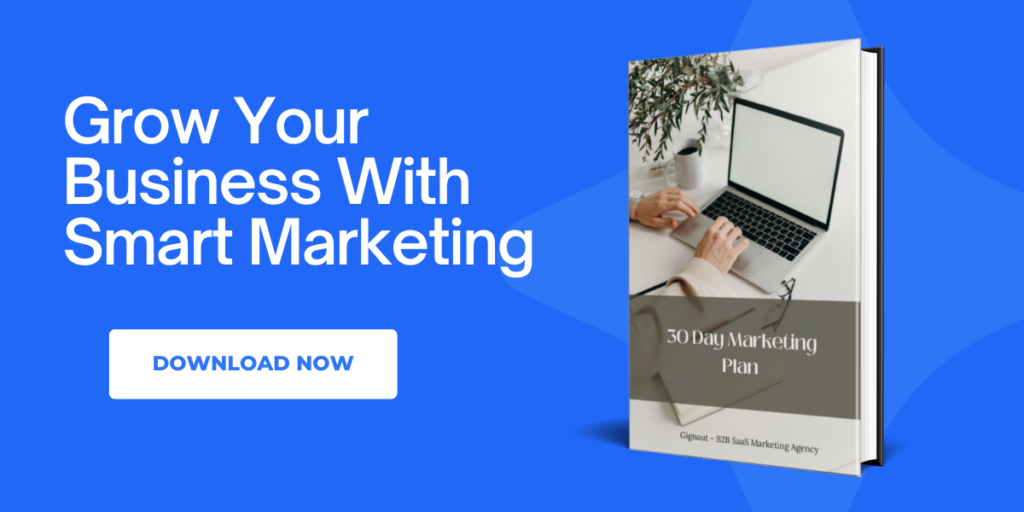The SaaS SEO checklist ensures that all essential elements, from keyword optimization to user experience, are meticulously addressed to enhance the visibility and effectiveness of the software on search engines.
Why SEO holds such immense significance for SaaS companies
First and foremost, it’s all about enhanced visibility. In a fiercely competitive market, differentiating yourself from the rest is an absolute necessity. SEO works its magic by ensuring that your website prominently appears in relevant search results. The higher your website ranks, the greater the influx of organic traffic, exposing your SaaS offering to a wider audience.
Secondly, SEO empowers you to target specific keywords and phrases that potential customers use while searching for SaaS solutions. By optimizing your website’s content and structure around these keywords, you attract highly relevant traffic that’s more likely to convert into leads or paying customers. This focused approach maximizes the return on investment (ROI) for your marketing endeavors.
Thirdly, achieving a high ranking in search results establishes credibility and engenders trust among potential customers. When users spot your website listed among the top results, they perceive it as reliable and trustworthy. This boost in credibility can significantly impact conversion rates and encourage users to delve deeper into your SaaS offering.
Moreover, unlike paid advertising campaigns that necessitate ongoing investments to sustain visibility, SEO offers long-term benefits. By consistently optimizing your website’s content and technical aspects, you can attain sustainable rankings that continue to drive organic traffic and generate leads over time.
SEO is a cost-effective solution compared to other marketing channels. While there may be upfront costs associated with optimizing your website and producing high-quality content, the long-term advantages outweigh the initial investment. With SEO, you can attract organic traffic and generate leads without heavily relying on paid advertising.
SEO Checklist for SaaS Websites |
|---|
| Task | Description |
|---|---|
| Keyword Research | Conduct thorough keyword research to identify relevant and high-traffic keywords for targeting in content optimization. |
| On-Page Optimization | Optimize website content, including headings, titles, meta tags, and descriptions, with target keywords for improved search engine visibility. |
| Technical SEO | Ensure proper website structure, navigation, and URL optimization for easy crawling and indexing by search engines. |
| Content Creation | Produce high-quality and engaging content that targets relevant keywords, addresses user queries, and provides value to the audience. |
| Link Building | Build high-quality backlinks from authoritative websites to improve website authority and search engine rankings. |
| Analytics and Monitoring | Regularly monitor and analyze SEO metrics, including organic traffic, rankings, and conversion rates, to track progress and make data-driven optimizations. |
| Ongoing Optimization | Continuously update and optimize website content, conduct A/B testing, and stay updated with SEO best practices and algorithm changes. |
Conducting Keyword Research
Keyword research is like peering into the minds of your potential customers to understand how they search for SaaS solutions. By doing this research, you can gain valuable insights into their needs and preferences, allowing you to optimize your website and attract organic traffic. So, let’s dive into the process of conducting keyword research for your SaaS website.
First and foremost, keyword research plays a pivotal role in your SaaS SEO strategy. It serves as the building block, revealing the specific terms and phrases that your target audience utilizes when looking for SaaS solutions. This understanding helps you grasp their intentions, challenges, and desires, empowering you to optimize your website accordingly. By strategically incorporating these keywords into your content, you increase your chances of ranking higher in search engine results pages (SERPs) and drawing in qualified leads for your SaaS offering.
To embark on your keyword research journey, take a moment to reflect on the unique value propositions and distinctive features of your SaaS product. Put yourself in the shoes of your target audience and imagine the terms they would likely employ when searching for solutions similar to yours. Consider the problems your SaaS product addresses and the benefits it provides.
Tips for selecting the most effective keywords for your SaaS offering:
- Focus on relevance: Choose keywords that accurately reflect your SaaS product and target the specific needs of your audience. Avoid targeting broad and generic keywords that may bring in irrelevant traffic.
- Consider search volume and competition: Balance your keyword selection by targeting keywords with a reasonable search volume and competition level. It’s generally easier to rank for long-tail keywords with less competition.
- Evaluate user intent: Consider the intent behind each keyword. Are users searching for information, and comparisons, or ready to make a purchase? Align your keyword strategy with user intent to attract highly relevant traffic.
- Incorporate a mix of short-tail and long-tail keywords: Short-tail keywords are shorter phrases that have higher search volumes but are more competitive. Long-tail keywords are more specific and have lower search volumes but offer higher conversion potential.
Optimizing On-Page Elements
When it comes to search engine optimization (SEO), on-page elements play a crucial role in determining the visibility and ranking of your website. By optimizing these elements, you can improve your website’s chances of appearing higher in search engine results pages (SERPs) and attract more organic traffic. In this article, we will explore the key on-page elements that you should focus on to enhance your website’s SEO performance.
1. Title Tags: Title tags are HTML elements that define the title of a web page. They are displayed as clickable headlines in SERPs and serve as an important ranking factor. To optimize your title tags, ensure they are concise, descriptive, and contain relevant keywords. It is recommended to keep the title tag length under 60 characters to ensure it appears fully in search results.
2. Meta Descriptions: Meta descriptions provide a brief summary of a web page’s content. While they do not directly impact rankings, they greatly influence click-through rates. To optimize meta descriptions, make them compelling, concise, and relevant to the page’s content. Including keywords naturally can also help attract users’ attention and encourage them to click on your link.
3. Header Tags: Header tags (H1, H2, H3, etc.) are HTML tags used to structure the content of a web page. They provide hierarchical organization and indicate the importance of different sections. Optimizing header tags involves using relevant keywords naturally within them, creating a logical hierarchy, and making the content more readable for both users and search engines.
4. URL Structure: A clean and well-structured URL can contribute to better SEO performance. Include relevant keywords in your URLs to provide context to search engines and users. Keep them concise, readable, and free of unnecessary characters or numbers. A descriptive and keyword-rich URL can also make it easier for users to understand the page’s topic before clicking on it.
5. Content Optimization: Creating high-quality, relevant, and informative content is paramount for SEO success. Optimize your content by incorporating relevant keywords naturally throughout the text. However, avoid keyword stuffing, as it can lead to penalties from search engines. Aim for a good balance between keyword usage and readability. Additionally, use variations of your target keywords to capture a broader range of search queries.
6. Image Optimization: Images can enhance the visual appeal of your website, but they can also impact its loading speed if not optimized properly. Compress images to reduce file size without compromising quality. Use descriptive filenames and include relevant alt tags that incorporate keywords to provide context to search engines. Alt tags also serve an important role in making your website more accessible to visually impaired users.
7. Internal Linking: Internal linking refers to linking one page of your website to another. It helps search engines discover and crawl your website effectively. When optimizing internal links, use descriptive anchor text that contains relevant keywords. Ensure that the linked pages are contextually related to enhance user experience and provide additional value.
8. Mobile Optimization: With the increasing number of users accessing the internet through mobile devices, optimizing your website for mobile responsiveness is crucial. Ensure your website is mobile-friendly, with a responsive design that adapts to different screen sizes. Mobile optimization is not only important for user experience but also a ranking factor in mobile search results.
9. Page Speed: Page speed is a critical factor in user experience and SEO. Optimize your website’s loading time by minimizing server response time, compressing files, leveraging browser caching, and minimizing redirects. A fast-loading website not only improves user satisfaction but also increases the chances of higher search engine rankings.
Technical SEO
Technical SEO refers to the optimization of the technical aspects of a website to enhance its visibility and performance in search engines. It involves implementing various technical strategies and best practices to ensure that search engine crawlers can efficiently crawl, index, and understand the website’s content.
Some key areas of focus in technical SEO include:
1. Website Structure: Creating a logical and well-organized website structure with clear navigation helps search engines and users find and access content easily.
2. URL Optimization: Optimizing URLs by using descriptive keywords and maintaining a clean URL structure aids search engines in understanding the relevance of the page.
3. Page Speed: Ensuring fast page load times is crucial for providing a positive user experience and satisfying search engine ranking factors. Compressing images, minifying code, and utilizing caching techniques can help improve page speed.
4. Mobile Optimization: With the increasing use of mobile devices, optimizing websites for mobile responsiveness and usability is essential. It involves employing responsive design, optimizing images and font sizes, and ensuring smooth mobile browsing.
5. Indexing and Crawling: Ensuring that search engine crawlers can access and crawl all relevant pages of a website is vital. Proper use of robots.txt files, XML sitemaps, and canonical tags helps control indexing and crawling behavior.
6. Structured Data Markup: Implementing structured data markup, such as Schema.org, enables search engines to understand the context and meaning of website content better. It can enhance the appearance of search engine results with rich snippets and other enhanced features.
7. HTTPS and Security: Switching to HTTPS (secure HTTP) protocol with an SSL certificate establishes a secure connection between the website and its users, enhancing trust and security. Search engines also consider HTTPS as a ranking signal.
8. Website Accessibility: Ensuring that the website is accessible to all users, including those with disabilities, is important. Following accessibility guidelines helps improve user experience and may positively impact search engine rankings.
9. XML Sitemaps: Creating and submitting XML sitemaps to search engines helps them discover and understand the website’s structure and content, leading to better indexing.
Content Creation
Content creation plays a vital role in SaaS SEO strategies as it helps attract organic traffic, engage users, and establish the brand as an authority in the industry. When creating content for SaaS websites, there are several key aspects to consider:
Target Audience: Understand the target audience, their needs, pain points, and preferences. Create content that addresses their challenges and provides valuable solutions.
Keyword Research: Conduct thorough keyword research to identify relevant and high-volume keywords related to the SaaS industry. Incorporate these keywords strategically into the content to improve search engine visibility.
Unique and Valuable Content: Create original and informative content that offers value to the audience. This could include blog posts, whitepapers, case studies, e-books, videos, or infographics. Ensure the content is well-researched, well-written, and addresses the target audience’s interests.
Educational Resources: Develop educational resources that help users understand the SaaS product or service better. This could involve creating tutorials, guides, FAQs, or knowledge-base articles that provide step-by-step instructions and insights.
User-Focused Approach: Prioritize user experience by creating content that is easy to read, visually appealing, and accessible across different devices. Use clear headings, subheadings, bullet points, and engaging visuals to enhance readability and user engagement.
Monitoring and Analyzing SEO Metrics
SaaS enterprises have the potential to amplify their online presence in order to allure a greater number of visitors, generate potential clientele, and enhance conversions. Nonetheless, to effectively optimize their SEO strategies, it is imperative for SaaS companies to keep a close watch on and analyze SEO metrics. By actively monitoring these metrics, SaaS companies can acquire valuable insights into their SEO performance, make data-driven decisions, and consistently augment their online visibility.
Importance of Tracking and Analyzing SEO Metrics for SaaS Companies
Tracking and analyzing SEO metrics offer several benefits for SaaS companies:
a. Performance Evaluation: By monitoring SEO metrics, SaaS companies can evaluate the effectiveness of their SEO strategies. They can assess the impact of their efforts on organic traffic, keyword rankings, and conversions. This helps identify areas of improvement and optimize SEO campaigns for better results.
b. Competitive Analysis: Tracking SEO metrics allows SaaS companies to analyze their competitors’ performance. By comparing keyword rankings, organic traffic, and backlink profiles, SaaS companies can identify opportunities and develop strategies to outperform their competitors in search engine results.
c. ROI Measurement: Tracking SEO metrics helps SaaS companies measure the return on investment (ROI) of their SEO efforts. By correlating SEO activities with key metrics such as organic traffic, lead generation, and conversions, SaaS companies can determine the effectiveness of their SEO campaigns and allocate resources accordingly.
d. Data-driven decision-making: Analyzing SEO metrics provides SaaS companies with actionable insights. By understanding user behavior, keyword performance, and conversion rates, SaaS companies can make informed decisions to optimize their SEO strategies and improve their online visibility.
Key SEO Metrics to Monitor
To effectively track and analyze SEO performance, SaaS companies should monitor the following key metrics:
a. Organic Traffic: Organic traffic refers to the number of visitors who land on a website through search engine results. Monitoring organic traffic helps assess the overall visibility and reach of a SaaS company’s website.
b. Keyword Rankings: Keyword rankings determine the position of a website in search engine results for specific search queries. Monitoring keyword rankings helps evaluate the success of keyword targeting and identify opportunities for improvement.
c. Backlinks: Backlinks are links from external websites that point to a SaaS company’s website. Monitoring backlinks helps evaluate the website’s authority, relevance, and link-building efforts.
d. Click-Through Rate (CTR): CTR is the ratio of users who click on a website’s link in search engine results to the total number of users who see the link. Monitoring CTR helps assess the relevance and effectiveness of title tags and meta descriptions.
e. Conversion Rate: Conversion rate measures the percentage of website visitors who complete a desired action, such as signing up for a trial or making a purchase. Monitoring conversion rates helps evaluate the effectiveness of SEO efforts in generating leads and conversions.
Role of Google Analytics and Other Tools in Tracking SEO Performance
Google Analytics is a powerful tool for tracking and analyzing SEO performance. It provides valuable insights into organic traffic, user behavior, conversions, and more. SaaS companies can use Google Analytics to track key SEO metrics, set up goals and funnels, and analyze website performance.
Get in touch with the Gignaut team today to start measuring and improving your marketing efforts.
Check the SaaS SEO Handbook to learn more.
SaaS SEO Checklist FAQ
1. What are the essential SEO techniques for SaaS websites?
Implementing effective SEO techniques is crucial for SaaS websites to improve their online visibility and attract targeted traffic. Some essential techniques include conducting thorough keyword research to identify relevant and high-traffic keywords, optimizing website content with these keywords to improve organic rankings, creating compelling meta tags and descriptions for better click-through rates, ensuring proper website structure and navigation for a user-friendly experience and search engine crawling, building high-quality backlinks from authoritative sources to boost credibility, optimizing page load speed for better user experience, and regularly monitoring and analyzing SEO metrics to make data-driven adjustments.
2. How long does it take to see the impact of SEO efforts on organic traffic?
The time it takes to see the impact of SEO efforts on organic traffic can vary based on several factors. Generally, it takes time for search engines to crawl and index website changes, and for the updated content to start ranking in search results. On average, it can take several weeks to a few months to see noticeable improvements in organic traffic.





